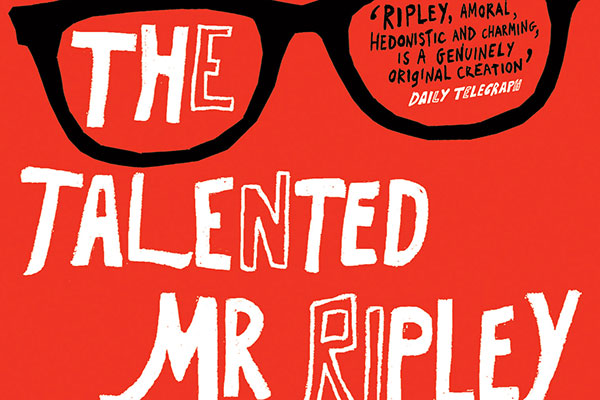The Talented Mr. Ripley
By Patricia Highsmith
As a twentysomething living in New York City, The Talented Mr. Ripley (1955) scrapes to get by. He engages in petty cons, learning to make the most of opportunities when they present themselves. Herbert Greenleaf, the affluent owner of a shipbuilding company, approaches Tom with an offer of an all expenses-paid trip to Italy to convince his son, Dickie Greenleaf, to return home. Herbert is under the impression that his son was close to Tom, when in fact they had only met once. But Tom knows what Mr Greenleaf wants to hear, and he can supply the words, the gestures and the smiles necessary to become whoever he needs to be. Tom feels like a second son, and finally good for something.
Tom arrives in the small town of Mongibello and is immediately envious of Dickie Greenleaf. Dickie has a trust fund, a beautiful house, and a boat. He is good looking and personable. He is everything Tom will never be. Tom wants to be just like Dickie. He needs Dickie to like him, to love him.
The Talented Mr. Ripley is much more than a crime novel. Patricia Highsmith’s first person narrative is a window into the mind of a psychopathic chameleon. Tom is smart enough to keep track of his lies, and disturbingly cool tempered enough to always put on a smile and say whatever is necessary to escape capture. Ripley’s sick brilliance is displayed flawlessly. The narrative weaves through his thought processes with such vivid detail that the reader wonders how troubled the author must be to have executed such a macabre and consistent character sketch.
The believability of Ripley’s character generates genuine fear in the reader. The decay of Ripley’s grip on his friendship with Dickie coalesces with his paranoia of losing face. Dickie’s friend Marge and his own experience of walking in on Tom wearing his clothing and acting like him finally convince him that there is something deeply wrong with Tom Ripley. Dickie humours Tom with a weekend trip to San Remo, and Tom talks him into a boat ride. On the ocean, Tom beats Dickie to death with an oar. The coldly unemotional description of the scene makes the brutal killing appear truly through the eyes of Tom. Just for a second, the reader becomes him – totally void of feeling.
This is where the madness begins. Tom becomes Dickie. He takes his clothes, masters his mannerisms, and corresponds with his family and friends through letters. Tom has fond memories of his adventures with Dickie; that he took Dickie’s life is inconsequential. That he must continue to kill and lie is necessary. What hurts him, what he fears more than anything else, is to be Tom Ripley again. The thought of putting on his old clothes and his timid facial expressions is a last resort that inevitably becomes a reality
Mr. Ripley is more than just talented. He has luck on his side. He evades the police, and convinces Marge and everyone else that Dickie killed himself. He deflects his implication in Dickie’s disappearance and the other murders by being open, forthright, and eager to please. Appearing honest can get you much in life. Mr. Ripley got almost everything he wanted.



